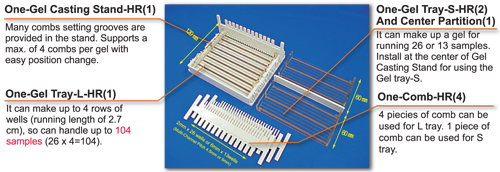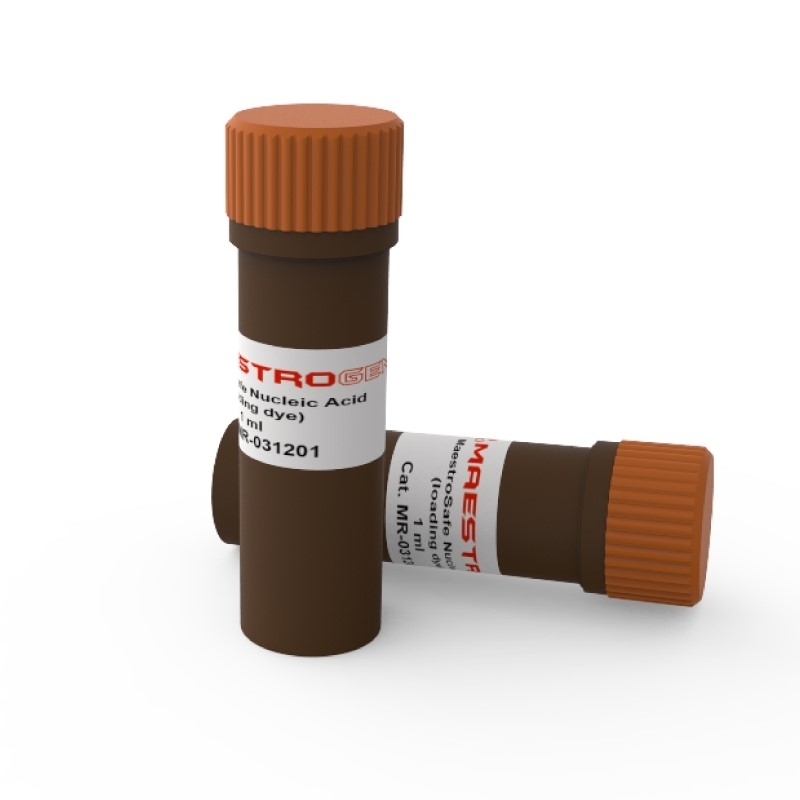
Multi-pipette and multi-sample analysis
The Mupid-One allows simultaneous electrophoresis of 104 samples with a single gel (26 wells ~ 4 rows ~ 96 samples + 8 markers). It is wider than the conventional Mupid series and can form 13 or 26 lanes, enabling sample loading with multipipettors (9mm pitch for 13 wells, 4.5 mm pitch for 26 wells).


Timer function
The timer can be set within the range of 0-99 minutes (with alarm function). Moreover, a setting memory function is provided for storage of the previous timer and output settings.

Variation of input and output voltages
Output voltage can be selected from among 7 levels (18, 25, 35, 50, 70, 100, and 135V). Input voltage supports 100-240V.

Heat-resistant materials
Gel solution up to 100°C can be poured into the gel tray. Clean up can be performed by using boiling water.

Safety lid with interlock system
For prevention of electric shock, without the lid, main power can not be switched 'on'.


Buffer drains
Buffer drains on two corners allow the easy removal of dangerous buffers solutions

Components
- One gel casting stand-HR (1)*
Many combs setting grooves are provided in the stand. Supports a max. of four combs per gel with easy position change.
- One-Gel Tray L-HR (1)
it can make up to four rows of wells (running lenght of 2.7 cm), handling up to 104 samples (26 x 4) is possible.
- One-Gel Tray S-HR (2) and center partition (1)
Can be used for making gels of 13 and 26 samples.
- One-Comb-HR (4)
Four combs can be used for L tray, whereas one comb can be used for S tray.


* number in brackets indicate number of pieces supplied with the chamber
Optional accessories
If you have made the switch from toxic ethidium bromide to safer alternatives such as Green Stain, then you'll be impressed with the blue LED Illuminator add-on for this system. This option visualizes and detects DNA fragments during the run so you won't need to make any guesses. The illuminator is used in place of the Mupid-One lid and includes an orange colored filter to protect your eyes and allow you to easily check the results without wearing goggles. The LED source produces light with a narrow emission peak at approximately 470 nm, effective for the excitation of safe nucleic acid stains such as Green Stain and SYBR dyes. The separated DNA is not damaged by the light emitted by LEDs, because it contains no short-wave UV light. Sensitivity down to 2 ng DNA can be achieved using the optional illuminator.














